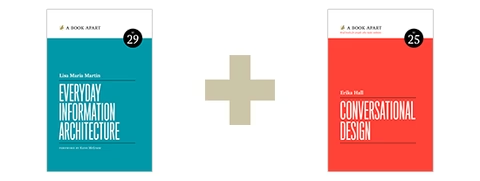Get to Know Lisa Maria Martin
May 23, 2019

Up next in our series, we get to know Lisa Maria Martin—author of our latest book, Everyday Information Architecture. She shares the characteristics she admires most in creative people, the poets she’s inspired by, and what she finds challenging about working remotely.

ABA: What is your favorite thing about your workspace?
Lisa Maria Martin: It’s in my house. I’ve been working from home for over five years; I know it’s not for everyone, but it’s the best way I’ve ever worked. I have a small office with too many books, a treadmill desk, and not enough surfaces (unless I repurpose the treadmill, which, uh, happens more than I’d like). The only challenge with it is how many companies don’t support remote work, because their internal culture doesn’t understand or trust that way of working; it’s really disappointing to have to pass on projects for something as silly as physical proximity. It’s 2019, and instead of flying cars we got reliable video-conferencing software, so let me use it already.
ABA: Is there anyone you’re following the work of right now, who you’d recommend others pay attention to?
LMM: Recently I’ve been really digging articles and talks from Marchaé Grair, Malaika Carpenter, Erika Hall, Dan Hon, Dave Thomas, and Anita Cheng. And I love the tweets I see from Amélie Lamont, Chappell Ellison, Sonia Gupta, Marco Rogers, Alice Goldfuss, Erica Joy Baker, Maxim Leyzerovich, and Kim Crayton. And Deb Chachra, Sarah Taber, and Chanda Prescod-Weinstein are in the sciences, but their observations are deeply applicable to the tech industry.
ABA: What does the tech industry need more of? Less of?
LMM: More human decision-making. Fewer algorithms.
ABA: What is your go-to source of inspiration when you’re trying to get out of a creative rut?
LMM: Poetry. It’s necessary for so many reasons, but one is that it weirds up your thinking. Really good poetry uses language in unexpected ways; it surprises your brain; it finds uncommon ways of looking at common things. I can’t think of a better way to challenge and change your patterns. (Try Jenny Xie, Ilya Kaminsky, Mary Ruefle, Lucille Clifton, Aracelis Girmay, Larissa Szporluk, Harryette Mullen, and Terrance Hayes.)
ABA: What characteristic do you most admire in other driven/creative people?
LMM: Three things:
- Kindness, by which I mean not niceness, not politeness, not sweetness, but a genuine desire to meet people where they are.
- Enthusiasm, by which I mean publicly and unabashedly being weird about dogs or spreadsheets or fandom or activism or whatever. I love when people love something and show up for it. I love when people give a shit.
- A willingness to engage, by which I mean an awareness of the system and one’s position within it, and an interest in bending the universe (web work included) toward protecting the vulnerable among us. It’s ongoing work and we don’t always get it right, but if you’re not even trying, if you’re not even willing to look at yourself—well. Those are not people to admire.
ABA: What tool, object, or ritual could you not live without to get you through a week?
LMM: Slack (for talking), Twitter (for listening), Word (for writing), Bear (for editing), and chill beats (for thinking).
ABA: What’s the biggest sacrifice you’ve made to do the work you do?
LMM: Stability. Independence is my preferred way of working, but it means, for instance, that I don’t get regular paychecks. I manage the ebb and flow just fine, but the mental calculus never stops being exhausting. Health coverage, savings plans, retirement accounts—they exist, but not the way they would if I had an employer. That’s a choice I made, and I stand by it, but, gosh, I have to wonder why this was the choice capitalism gave me in the first place: my autonomy or my security. Anyway, back to making websites.
Have you ordered Lisa Maria’s new book, Everyday Information Architecture, yet? Learn how to organize web content with intention and get more comfortable using language in design: add Conversational Design by Erika Hall to your order and save 10% (15% when you buy paperbacks & ebooks)!
